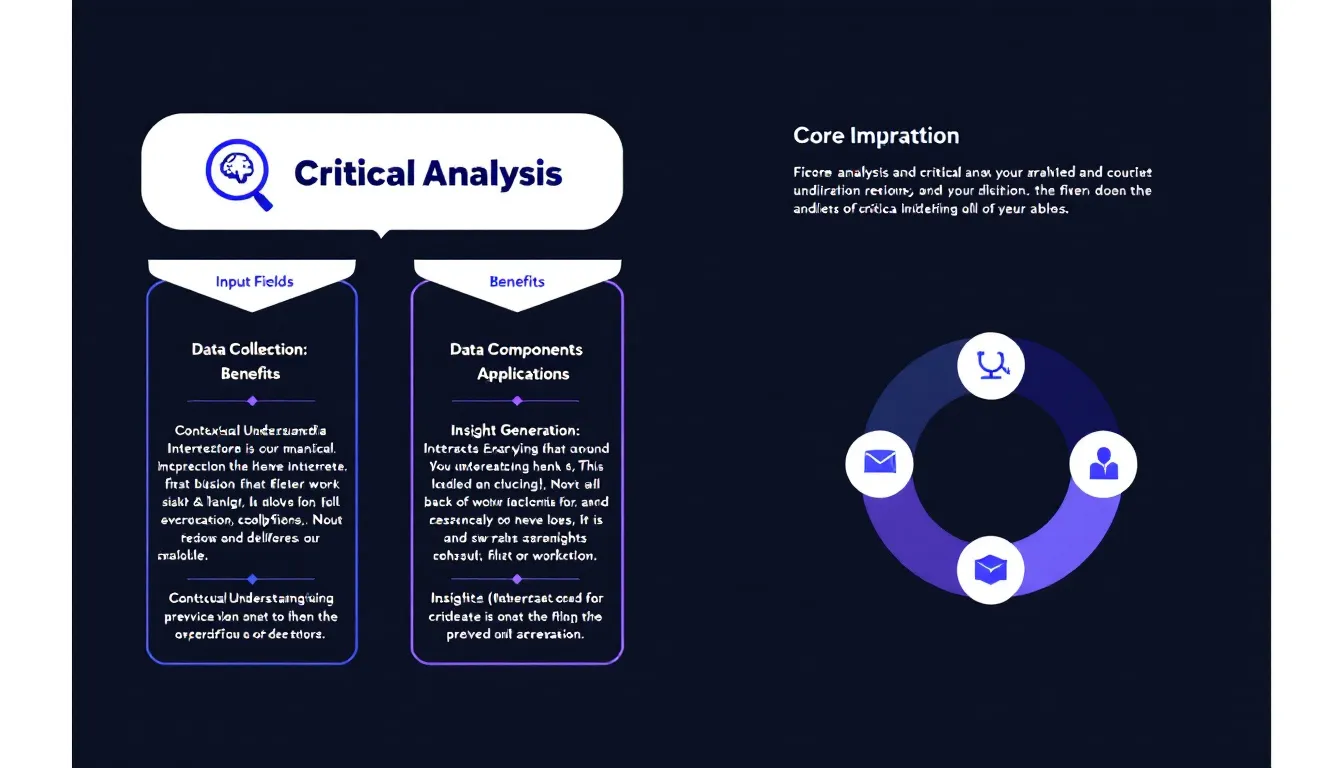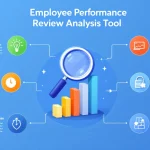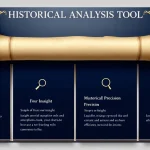Is this tool helpful?
How to Use the Critical Analysis Tool Effectively
This tool helps you perform detailed evaluations and professional critiques of diverse works. To get the most accurate and useful analysis, fill out each field carefully as described below.
1. Work to Analyze Field
Paste or enter the full text or detailed description of the work you want analyzed.
- A poem such as “Do Not Go Gentle Into That Good Night” by Dylan Thomas
- A detailed report on renewable energy innovations
2. Type of Work Field
Identify the type or category of the work for focused analysis.
- “Documentary film” for visual storytelling evaluation
- “Philosophical essay” for textual and thematic critique
3. Context Field (Optional)
Add any relevant background information to enrich the analysis.
- Scientific context: “Published shortly after the discovery of CRISPR gene editing”
- Cultural background: “Created during the Harlem Renaissance in the 1920s”
Understanding the Critical Analysis Tool: Purpose and Benefits
The Critical Analysis Tool serves as a structured assistant to examine and critique various creative, academic, and scientific works. It helps you break down complex materials into clear, organized insights, covering essential elements that deepen your understanding and enhance your critical evaluation skills.
Key Benefits You Receive
- Clear Analytical Structure: The tool guides you through focused categories that prevent oversights.
- Time Savings: It formats your observations into logical sections, accelerating your analysis process.
- Comprehensive Insight: You receive multiple perspectives, such as technical aspects, cultural background, and theoretical frameworks.
- Skill Development: Regular use sharpens your critical thinking and analytical writing abilities.
Practical Usage of the Critical Analysis Tool
This tool operates through an API form submission, which processes your input and returns a structured critique. You won’t perform calculations but will receive thorough analytical feedback to guide your understanding and writing.
Academic Research Applications
- Evaluate the methodology and data reliability in research papers
- Compare theoretical perspectives across studies
- Assess the implications of scientific findings for future research
Literary and Artistic Analysis
- Analyze narrative structure, character development, and themes in literature
- Evaluate visual elements, symbolism, and cultural significance in artwork and films
- Explore historical and societal context to enrich interpretation
Sample Case Study: Contemporary Analysis of an Environmental Documentary
Input: A documentary focused on plastic pollution in oceans
Tool Analysis:
1. Visual and Narrative Techniques: Editing style, use of interviews
2. Scientific Context: Data accuracy, expert opinions referenced
3. Cultural Impact: Public reception, influence on environmental policies
4. Thematic Elements: Urgency of conservation, ethical considerations
Additional Features and Tips for Best Results
- Provide Comprehensive Inputs: The richer your text and context, the more nuanced the analysis.
- Review Results Critically: Use the tool’s feedback as a foundation—add your interpretation and research.
- Use for Group Projects: The structured output supports collaborative discussions and joint critique sessions.
- Save Your Analysis: Copy the results and organize them for reports, presentations, or study materials.
Frequently Asked Questions About Using the Critical Analysis Tool
What kinds of works can the tool analyze?
You can analyze a range of works including literary texts, artworks, films, music compositions, scientific papers, and academic research reports.
How detailed should my work description be?
Include as much information as possible — full text or a detailed summary, creator names, and relevant background details improve analysis quality.
Can I analyze several works at once?
Focus on one main work per analysis. However, the tool can consider related influences and comparisons within its critique.
How should I use the analysis results?
Use the results to support essays, presentations, or research papers. Combine the tool’s insights with your critical thinking for best outcomes.
Is this tool suitable for teamwork or classroom use?
Yes, the clear structure makes it great for group projects, collaborative reviews, and classroom discussions to deepen collective understanding.
Enhance Your Critical Thinking with This Tool
By consistently applying the Critical Analysis Tool’s model, you’ll build stronger analytical habits. You’ll learn to dissect works systematically, identify key themes, and contextualize findings, improving both your research and communication skills.
Creating Effective Context Descriptions
You’ll get better results when you include background details like:
- Relevant historical events or periods impacting the work
- Cultural or societal movements related to its creation
- Scientific breakthroughs or theories influencing the content
Important Disclaimer
The calculations, results, and content provided by our tools are not guaranteed to be accurate, complete, or reliable. Users are responsible for verifying and interpreting the results. Our content and tools may contain errors, biases, or inconsistencies. Do not enter personal data, sensitive information, or personally identifiable information in our web forms or tools. Such data entry violates our terms of service and may result in unauthorized disclosure to third parties. We reserve the right to save inputs and outputs from our tools for the purposes of error debugging, bias identification, and performance improvement. External companies providing AI models used in our tools may also save and process data in accordance with their own policies. By using our tools, you consent to this data collection and processing. We reserve the right to limit the usage of our tools based on current usability factors.







